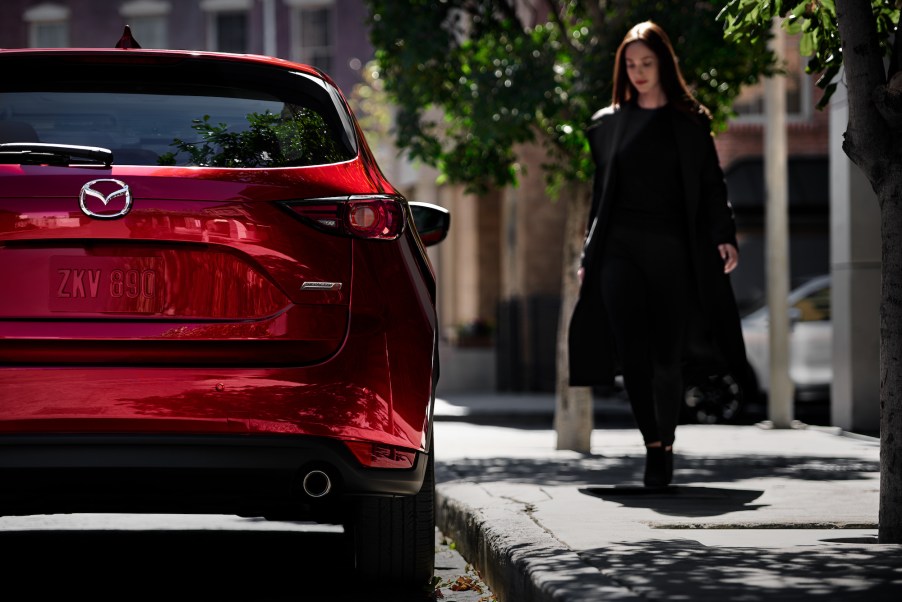
Why Did Mazda Spend Money to Bring the Diesel CX-5 to the U.S?
With a huge push from most of the automakers to go towards hybrids and electrics to save fuel and the environment, diesel-powered cars and SUVs are just about extinct. However, Mazda decided to introduce the CX-5 Skyactiv-D into the market late last year, and honestly, it has us a bit perplexed as to why. Volkswagen’s “dieselgate” scandal left a nasty scar on the hearts of consumers, leaving diesel vehicles to be less than desirable. So what’s the point having an oil-burning Mazda CX-5 in the mix?
The Mazda CX-5 Skyactiv-D was long-awaited and now ignored
The Mazda CX-5 Skyactiv-D was revealed at the 2019 New York Auto Show and offered in the brand’s lineup for the 2019 model year. According to Mazda, upon the car’s release, the Skyactiv-D version of the brand’s most-popular SUV was due to the “strong demand for a diesel engine in the U.S. that offers a premium driving experience. Basically, they released it because people wanted it. Which makes sense, considering Mazda had actually been touting a diesel engine for the past decade like a carrot on a stick, however, due to U.S. regulations, it never appeared. Until last year, when it finally debuted in the CX-5.
However, it was a little too late and what was even more confusing was the fact that Mazda only made the diesel engine available in the top-trim CX-5 Signature. So if you wanted the extra torque and low-end pull of the oil-burning engine, then you would have to fork out around $41,000 for it, which is about $4,000 more than the price of entry for the top-trim CX-5 with the regular gasoline engine.

What does the Mazda CX-5 Skyactiv-D come with?
We wish that we could say that the $4,000 premium comes with an ungodly amount of low-end grunt and stellar fuel economy figures, however, that is unfortunately not the case. In fact, the 2.2-liter diesel engine produces 168 horsepower and 290 lb-ft of torque with an EPA estimated fuel economy rating of 27 mpg in the city and 30 mpg on the highway. Does that sound impressive? Not really. Mainly because the turbocharged 2.5-liter engine that is available in the regular CX-5 is rated at 227 horsepower and 310 lb-ft of torque with 87-octane fuel and 22 mpg in the city and 27 mpg on the highway.
Considering 87 octane can actually be cheaper than diesel in certain locations and certain times of the year – and the fact that the gasoline version of the CX-5 is cheaper than the Skyactiv-D – we would have to say that Mazda didn’t make the greatest case for the long-awaited diesel engine. Although, we do applaud them for putting in the highest trim level, which includes a rich-looking leather interior, all-wheel drive, and all of the driver-assist features and other infotainment and electronic niceties that you could want in a compact crossover. However, given the car’s price structure and lack of power, we can see why the CX-5 Skyactiv-D seems like it’s only going to be around for one model year.

Who would buy the Mazda CX-5 Skyactiv-D?
On the plus side, the diesel version of the CX-5 can tow up to 3,500 pounds, thanks to the low-end torque that it has. Compare that to the maximum towing capacity of 2,000 for the gasoline CX-5, and you’ll know which one you need to choose if towing a camper is part of your lifestyle. However, we’re not entirely sure why any would choose the CX-5 Skyactiv-D otherwise. We guess, perhaps, if you’re really into diesel engines and are finally glad that you can buy one in Mazda. Otherwise, just opt for the regular CX-5.



